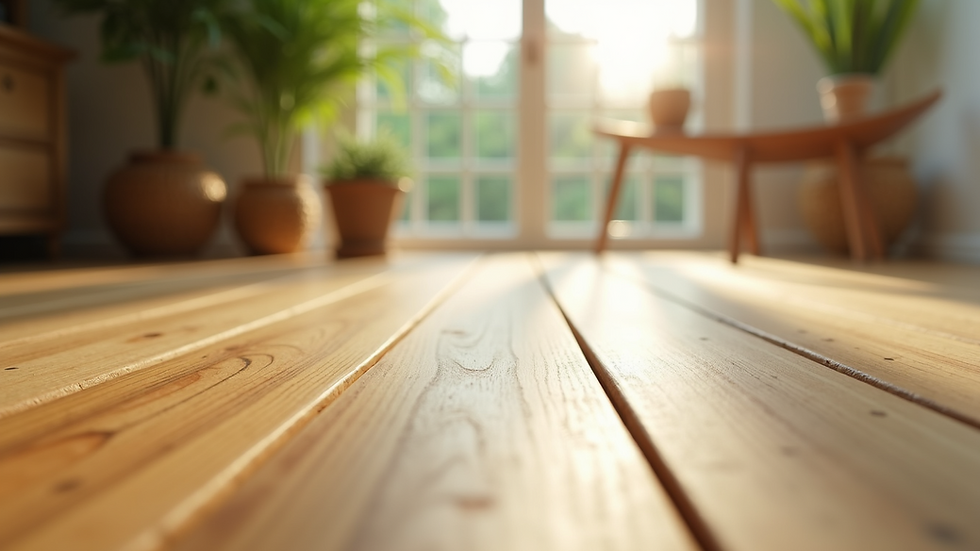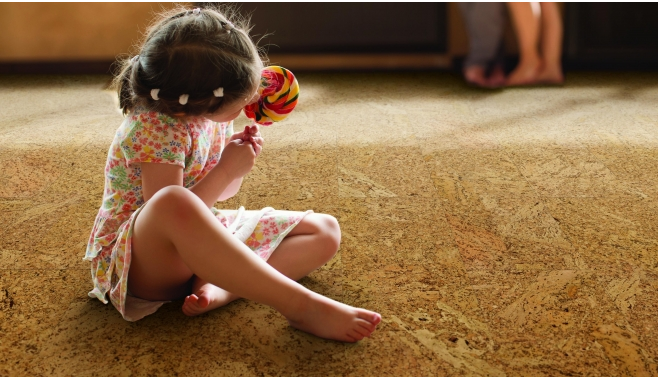Eco-Friendly Flooring Materials for Your Home
- Daniela Zaremba

- Jul 28
- 3 min read
Choosing the right flooring for your home is more than just a design decision. It impacts your indoor air quality, the environment, and your long-term costs. Eco-friendly flooring options are gaining popularity as homeowners seek to reduce their carbon footprint and create healthier living spaces. This guide explores various sustainable flooring materials, their benefits, and practical tips to help you make an informed choice.
Exploring Eco-Friendly Flooring Options
When selecting flooring, it’s important to consider materials that are renewable, non-toxic, and durable. Eco-friendly flooring options come in many forms, each with unique characteristics:
Cork Flooring: Harvested from the bark of cork oak trees, cork is renewable and biodegradable. It offers excellent insulation, sound absorption, and comfort underfoot. Cork flooring is naturally resistant to mold and mildew, ideal for damp areas.
Reclaimed Wood: Using wood salvaged from old buildings or furniture reduces the demand for new lumber. Reclaimed wood adds character and history to your home while minimizing deforestation.
Recycled Metal and Glass Tiles: These tiles are crafted from post-consumer waste, reducing landfill contributions. They add a modern, artistic touch to floors and are highly durable.
Each of these options offers a way to reduce environmental impact while enhancing your home’s aesthetic and comfort.

Benefits of Choosing Eco-Friendly Flooring Options
Opting for eco-friendly flooring materials brings several advantages beyond environmental responsibility:
Improved Indoor Air Quality: Many conventional flooring products emit volatile organic compounds (VOCs) that can harm health. Eco-friendly options typically use low-VOC finishes and adhesives, reducing indoor pollution.
Durability and Longevity: Sustainable flooring materials are often more durable, meaning they last longer and reduce the need for replacement. This saves money and resources over time.
Energy Efficiency: Some materials, like cork, provide natural insulation, helping to maintain indoor temperatures and reduce heating and cooling costs.
Aesthetic Versatility: Eco-friendly floors come in a wide range of styles, colours, and textures, allowing you to achieve your desired look without compromising sustainability.
Supporting Ethical Practices: Choosing sustainable flooring materials often means supporting companies that prioritize responsible harvesting, fair labour, and environmental stewardship.
By selecting eco-friendly flooring options, you contribute to a healthier home environment and a more sustainable planet.

What is the Most Sustainable Type of Flooring?
Determining the most sustainable flooring depends on several factors including resource renewability, manufacturing impact, and end-of-life disposal. Among the top contenders:
Cork is another excellent choice due to its renewable harvesting process. The bark is stripped without harming the tree, which can live for over 200 years.
Reclaimed Wood scores high on sustainability by reusing existing materials and reducing demand for new lumber. However, availability can be limited and quality varies.
Engineered Wood made from responsibly sourced wood and low-impact adhesives can also be sustainable. For example, the PURnorth collection offers engineered wood options that balance durability with environmental responsibility.
Ultimately, the best sustainable flooring choice depends on your specific needs, budget, and environmental priorities.
Practical Tips for Choosing and Maintaining Eco-Friendly Floors
To maximize the benefits of eco-friendly flooring options, consider these practical tips:
Verify Certifications: Look for certifications like FSC (Forest Stewardship Council), GreenGuard, or FloorScore to ensure materials meet environmental and health standards.
Choose Low-VOC Finishes: Select finishes and adhesives with low or no VOC emissions to maintain indoor air quality.
Consider Local Materials: Using locally sourced flooring reduces transportation emissions and supports local economies.
Plan for Durability: Choose materials suited to your household’s lifestyle. For example, engineered wood are good for high-traffic areas, while cork offers comfort in bedrooms or offices.
Maintain Properly: Follow manufacturer guidelines for cleaning and care to extend the life of your floors. Avoid harsh chemicals that can damage finishes or release toxins.
Recycle or Repurpose Old Flooring: When replacing floors, explore options to recycle or donate old materials to reduce waste.
By following these steps, you can ensure your eco-friendly flooring remains beautiful and sustainable for years to come.
Enhancing Your Home with Sustainable Flooring Materials
Incorporating eco-friendly flooring options into your home is a meaningful way to combine style, comfort, and environmental responsibility. Whether you prefer the soft warmth of cork, or the timeless appeal of reclaimed wood, there are sustainable choices to fit every taste and budget.
Remember, investing in sustainable flooring materials not only benefits the planet but also creates a healthier living environment for you and your family. Take the time to research, compare, and select the flooring that aligns with your values and lifestyle.
Your home deserves floors that support a greener future while enhancing your everyday life. Start exploring eco-friendly flooring options today and make a positive impact that lasts.



Comments